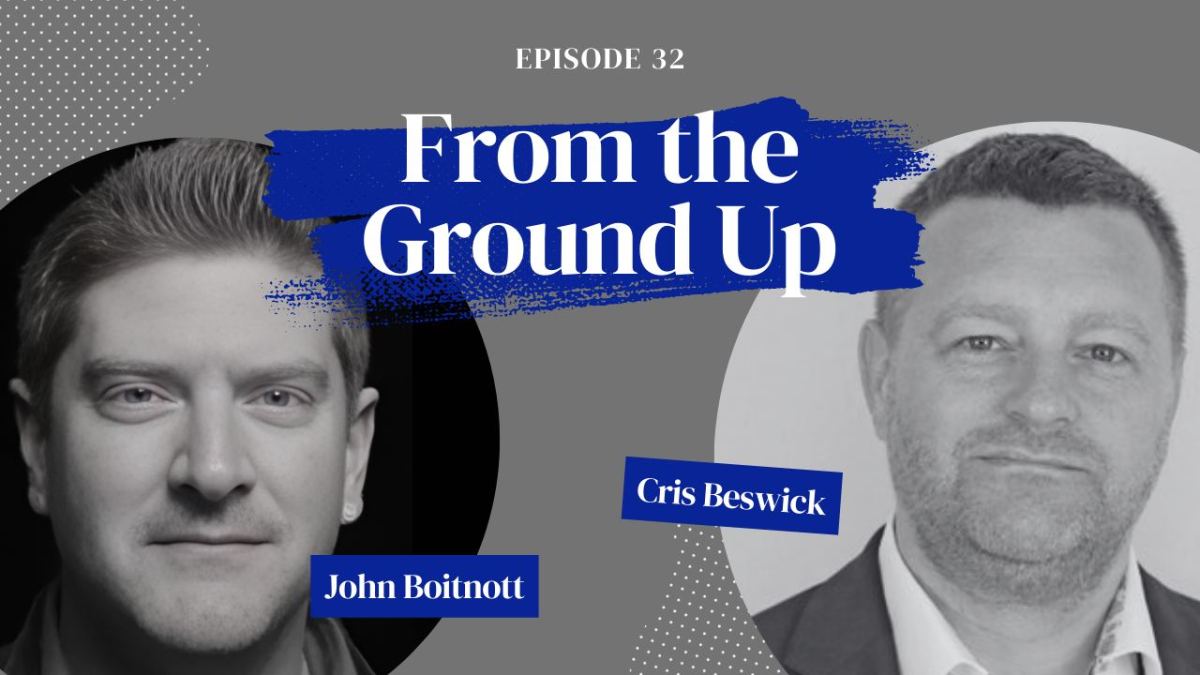Cris Beswick has spent the better part of two decades inside boardrooms across the world, advising Fortune 500s, multinational giants, and ambitious startups alike on the core issue of innovation. Not the buzzword. Not the marketing tagline. Real, measurable, innovation, the kind that transforms organizations and actually sticks.
A former CEO and self-described “never-really-an-ex-entrepreneur,” Beswick is best known for helping companies unlock what he calls “differentiated innovation,” the elusive sweet spot between playing it safe with incremental changes and chasing the fantasy of industry disruption.
The mistake many companies make, he argues, is aiming too high, or worse, mistaking movement for progress. Too many boardrooms chase “disruption” without ever defining what they’re trying to disrupt. They spend millions on flashy labs and strategy decks, only to come up empty-handed when the ROI doesn’t show up. The reality? Very few organizations on the planet ever truly disrupt anything. Instead, most would be better served by solving moderately-sized problems with outsized impact, something Beswick sees as the most fertile ground for growth.
To get there, companies have to stop treating innovation as a thing and start seeing it as a capability. That means aligning strategy, governance, tools, leadership, and culture, all at the same level of maturity. A brilliant idea can’t thrive in a toxic culture. Strong leadership can’t compensate for the absence of processes or resources. And no matter how much a company “talks innovation,” nothing sticks without a system that reinforces it.
The first red flag Beswick typically sees? A company with an “innovation team” or a well-funded lab that can’t even define what innovation means in their context. If there’s no shared definition, there’s no foundation. And if innovation isn’t embedded into company culture, it will collapse under its own weight, often within a year.
That’s why Beswick focuses heavily on culture. Not the posters-on-the-wall kind, but the lived behaviors and mindsets that support continuous exploration and smart risk-taking. One of his more counterintuitive insights? Innovation doesn’t scale from the top down or the bottom up. It moves “middle out.” Middle managers, he says, are the real drivers of innovation because they’re the ones translating high-level strategy into practical action. They’re bilingual, fluent in both C-suite language and frontline execution, but often lack the support and structure to innovate effectively. That’s where organizations either empower or suffocate growth.
Another overlooked issue is time. Leaders often expect teams to produce breakthrough ideas without giving them the bandwidth to do it. Without carving out space for employees to explore, experiment, and solve, innovation efforts stall. Beswick sees this again and again, especially when HR isn’t looped into the process of backfilling headcount or restructuring responsibilities to allow for innovation work.
He also warns against static long-term strategies. In a world that moves so quickly, innovation plans must remain fluid. Rather than drafting multi-year roadmaps, he advocates for an “innovation thesis,” a living document that continuously evolves based on market conditions, customer needs, and shifting priorities.
And what about artificial intelligence? It’s a game-changer, but not a replacement for human insight. AI is great at surfacing data and spotting trends. But true innovation still relies on human observation, empathy, and creativity. It can’t yet sit in a room, watch how people interact with a product, and intuit the one tweak that would make their lives easier.
For CEOs wondering where to start, Beswick’s advice is blunt: stop looking for a silver bullet and start building the system. Innovation is not a campaign or a quarterly initiative. It’s a capability. If you’re not willing to invest in the tools, structure, and leadership development required to support it, you’re not ready to innovate.
And if you’re not prepared to let your middle managers lead the charge, you’re probably going to fail.
Originally published on CEO Official.








